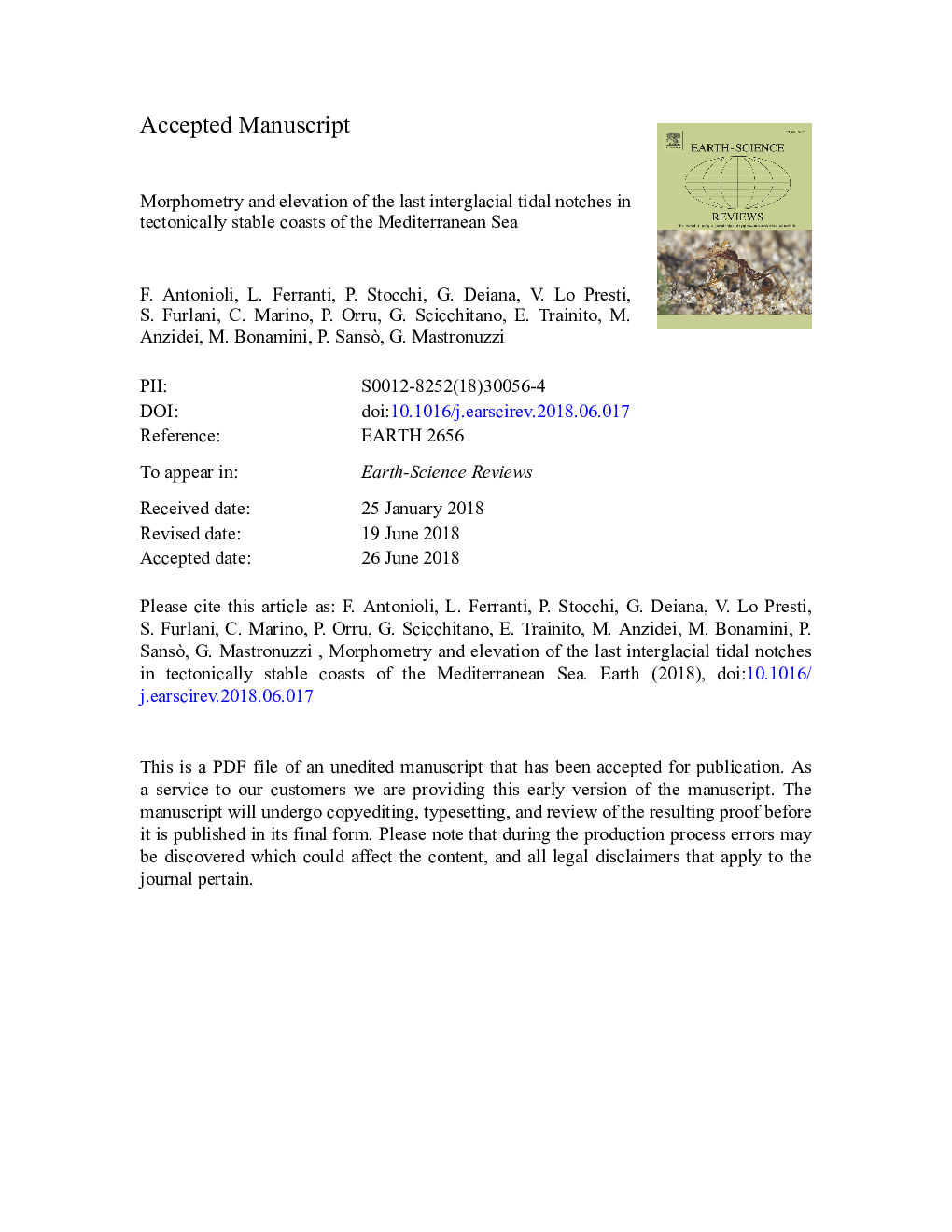| Article ID | Journal | Published Year | Pages | File Type |
|---|---|---|---|---|
| 8912896 | Earth-Science Reviews | 2018 | 66 Pages |
Abstract
The investigated MIS 5.5 notches are located in tectonically stable coasts, compared to other sectors of the central Mediterranean Sea where they are uplifted or subsided to ~100â¯m and over. In these stable areas, the elevation of the base of the MIS 5.5 notch ranges from 2.09 to 12.48â¯m, with a mean of 5.7â¯m. Such variability, although limited, indicates that small land movements, deriving from slow crustal processes, may have occurred in stable areas. We defined a number of sectors characterized by different geologic histories, where a careful evaluation of local vertical land motion allowed the selection of the best representative elevation of the MIS 5.5 peak highstand for each sector. This elevation has been compared against glacial isostatic adjustment (GIA) predictions drawn from a suite of ice-sheet models (ICE-G5, ICE-G6 and ANICE-SELEN) that are used in combination with the same solid Earth model and mantle viscosity parameters. Results indicate that the GIA signal is not the main cause of the observed highstand variability and that other mechanisms are needed. The GIA simulations show that, even within the Mediterranean Basin, the maximum highstand is reached at different times according to the geographical location. Our work shows that, besides GIA, even in areas considered tectonically stable, additional vertical tectonic movements may occur with a magnitude that is significantly larger than the GIA.
Keywords
Related Topics
Physical Sciences and Engineering
Earth and Planetary Sciences
Geology
Authors
Antonioli F., Ferranti L., Stocchi P., Deiana G., Lo Presti V., Furlani S., Marino C., Orru P., Scicchitano G., Trainito E., Anzidei M., Bonamini M., Sansò P., Mastronuzzi G.,
